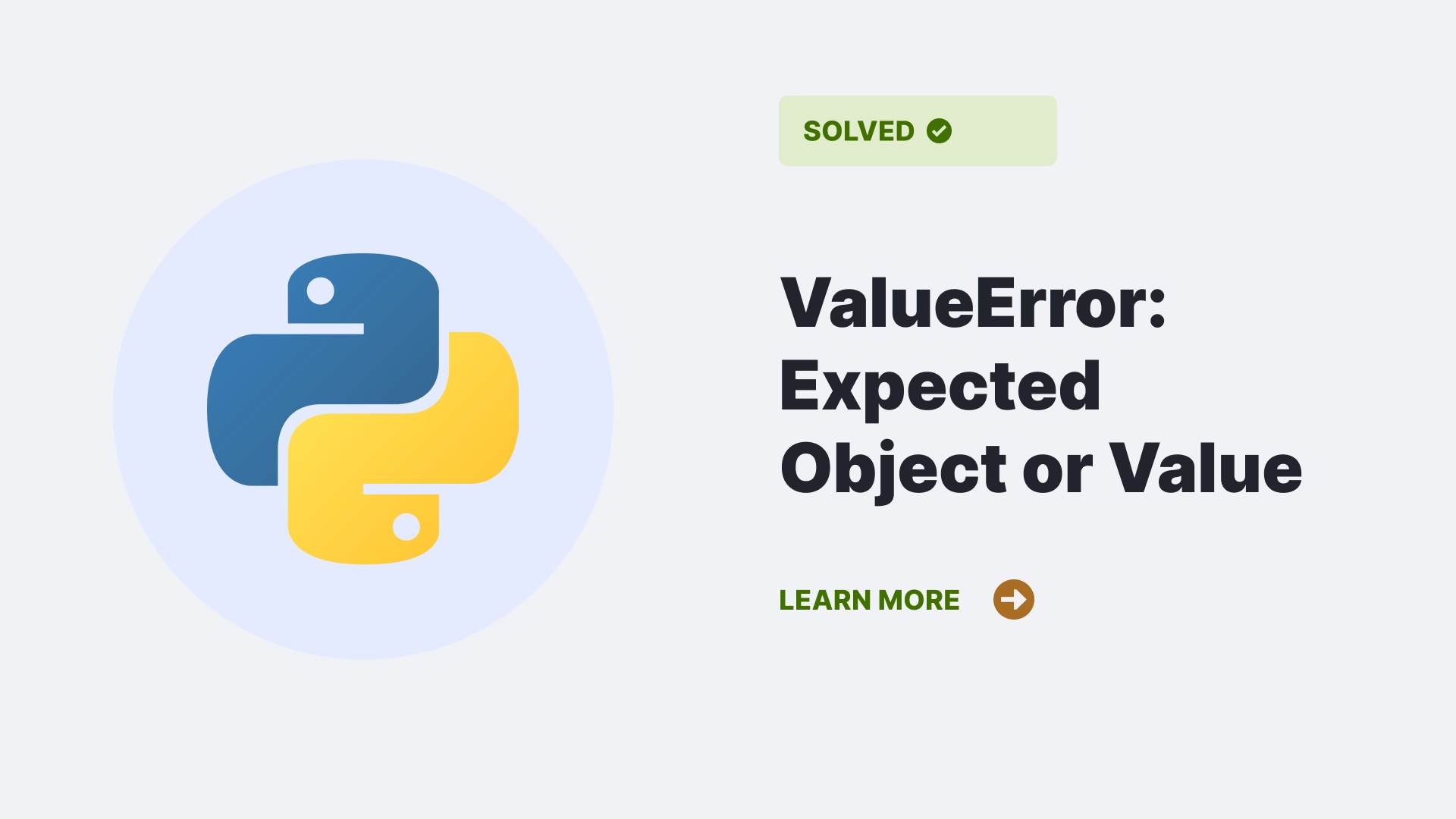In Python, the error message “ValueError: expected object or value” is raised when a function or operation anticipates a specific object or value as an argument but receives something that does not match the expected type or format. It is a generic error message used in various programming languages and frameworks to indicate that an expected object or value was not provided or that the provided input is not of the expected type or format.
Contents
When does the ‘ValueError: expected object or value’ occur in Python?
The use of the error message “ValueError: expected object or value” is prevalent in situations where a function or operation requires a specific type of input but receives something different or incompatible. It serves as a general indicator that the provided input does not meet the expected requirements.
The error commonly occurs in the following situations:
- Unexpected format or structure: Certain functions or operations have specific requirements regarding the format or structure of the provided object or value. If the input does not adhere to the expected format, such as a malformed string or an incorrectly formatted data structure, the error can be raised.
- Invalid or unsupported values: Some functions may have restrictions on the range or set of valid values they can accept. If an invalid or unsupported value is passed that falls outside the allowed range or set, the “ValueError: expected object or value” error may occur.
- Incorrect argument type: If a function expects an argument of a particular type but receives an incompatible type, the “ValueError: expected object or value” error may occur. For example, if a function requires an integer input but is provided with a string or a list, this error can be raised.
Example of ‘ValueError: expected object or value’ occur?
The example below, shows we have a function multiply_numbers that is expected to multiply two numbers together. However, when calling the function, we mistakenly pass a string “2” as the first argument instead of an integer. When executing the code, the function attempts to perform the multiplication operation using the string and the integer. Since the function expects numeric values, it encounters a ValueError because it cannot multiply a string and an integer together.
Syntax:
def multiply_numbers(a, b):
return a * b
result = multiply_numbers("2", 3)
print(result)What steps should be taken when the error is found?
The following steps should be taken when the error is found:
- When encountering this error, it is beneficial to inspect the specific input provided and compare it with the expected input requirements.
- Analysis can help identify any inconsistencies or mismatches that are causing the error.
- Examining the traceback or error message details can provide further insights into the source of the error.
- By verifying that the provided object or value matches the expected type, format, and validity requirements, we can effectively address this ValueError and ensure the proper functioning of our code.
How can ‘ValueError: expected object or value’ be resolved?
To resolve this error, we need to ensure that the multiply_numbers function receives two numeric values as arguments. In this case, correcting the argument "2" to the integer 2 would resolve the error and produce the expected multiplication result. The following are the methods to solve the error.
- Review the documentation or specifications of the function or operation to understand the expected input requirements.
- Ensure that the provided object or value matches the expected type and adheres to any necessary formatting rules.
- Check for any constraints or restrictions on the range or set of valid values that the function or operation can accept.
- Inspect the specific input provided and compare it with the expected input requirements to identify any inconsistencies or mismatches.
- Examine the traceback or error message details to gather more information about the error.
Glossary
What is an object?
In Python, an object is a fundamental concept that represents a particular instance of a class. It is a runtime entity that combines data (attributes) and behaviors (methods) into a single unit. Objects are the building blocks of object-oriented programming (OOP) and are used to model and manipulate real-world entities or concepts.
What is ValueError?
In Python, a ValueError is a built-in exception that occurs when a function or operation receives an argument of the correct data type but an inappropriate value. It indicates that the value passed to a function or used in an operation is invalid and does not meet the expected criteria. Handling ValueError exceptions appropriately allows you to gracefully handle invalid values and prevent your program from crashing or producing incorrect results.
Conclusion
As programming languages and frameworks have evolved, they have adopted consistent error messages and exception handling mechanisms to aid in debugging and troubleshooting. The “ValueError: expected object or value” error message is one such standardized message that helps developers identify issues related to incorrect or incompatible input. By carefully reviewing and correcting the input to match the expected requirements, you can resolve the “ValueError: expected object or value” error and ensure the proper execution of your code.
References
JSON Formatting. MDN Web Docs.
Follow PythonClear for more.

